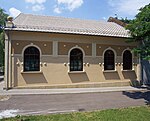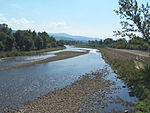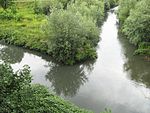Duchy of Oświęcim
Duchies of SilesiaFiefdoms of PolandHistory of Lesser PolandStates and territories established in 1315

The Duchy of Oświęcim (Polish: Księstwo Oświęcimskie), or the Duchy of Auschwitz (German: Herzogtum Auschwitz), was one of many Duchies of Silesia, formed in the aftermath of the fragmentation of Poland. It was established about 1315 on the Lesser Polish lands east of the Biała river held by the Silesian branch of the Polish royal Piast dynasty. Briefly semi-autonomous, with its capital in Oświęcim, it was finally sold to the Kingdom of Poland in 1457. Annexed by the Habsburg Empire in 1772, the remaining ducal title ceased to exist in 1918 with the lands being reincorporated into the Second Polish Republic.
Excerpt from the Wikipedia article Duchy of Oświęcim (License: CC BY-SA 3.0, Authors, Images).Duchy of Oświęcim
Jędrzeja Śniadeckiego,
Geographical coordinates (GPS) Address Nearby Places Show on map
Geographical coordinates (GPS)
| Latitude | Longitude |
|---|---|
| N 50.034014 ° | E 19.23814 ° |
Address
Jędrzeja Śniadeckiego 19
32-602
Lesser Poland Voivodeship, Poland
Open on Google Maps









